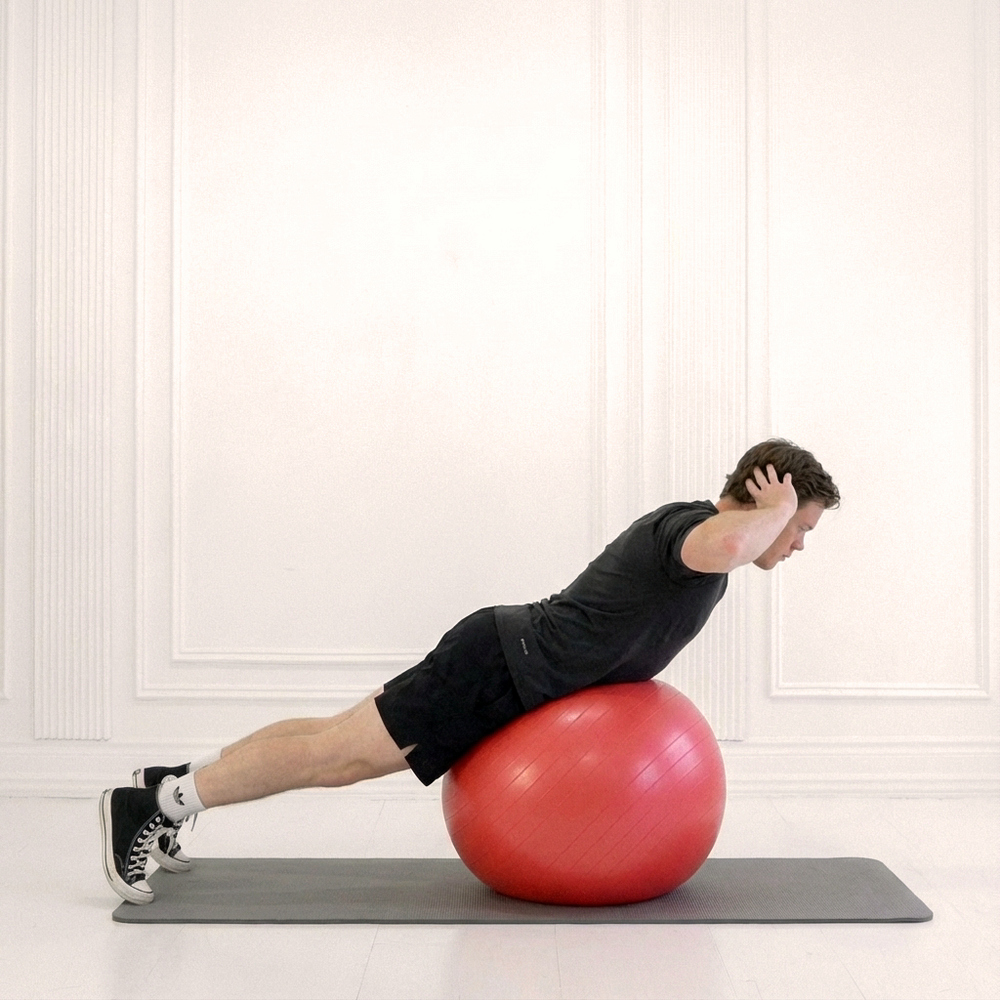
Video Coming Soon
We're working on adding video demonstrations for this exercise.
Stability Ball Back Extension
A stability ball-based back extension targeting erector spinae, glutes, and hamstrings to strengthen the lower back and improve core stability; used for posture enhancement and injury prevention.
About Exercise
Equipment
Stability Ball
Difficulty
3/5 • Beginner
Primary Muscle Groups
Lower Back
Secondary Muscles
Abs, Obliques
Popularity Score
6
Goals
Training Style
Setup Requirements
Requires Rack
No
Requires Bench
No
Requires Spotter
No
Space Needed
Small
Noise Level
Low
Muscle Breakdown
View Muscle MapLower Back
9/10Erector Spinae
Glutes
7/10Glute Max
Hamstrings
6/10Biceps Femoris
Abs
5/10Transverse Abdominis
Obliques
4/10External Obliques
Programming
Typical Rep Range
8-15 reps
Rest Between Sets
60-90 seconds
How to Perform
Place the stability ball on a non-slip surface. Lie face-down over the ball with hips and lower torso centered on top, feet planted shoulder-width apart on the floor, and hands crossed over your chest.
- Engage your core and maintain a neutral spine.
- Exhale and lift your torso by contracting your lower back, glutes, and hamstrings until your body forms a straight line from head to heels.
- Pause briefly at the top while squeezing your glutes and back.
- Inhale and lower your torso slowly in a controlled manner back to the starting position.
- Repeat for the desired repetitions, keeping movements smooth.
Coaching Tips
Form Cues
- Keep core tight
- Maintain neutral spine
- Squeeze glutes at top
- Control the descent
- Feet firm on ground
Breathing
Inhale as you lower your torso; exhale as you lift and brace your core throughout.
Tempo
3-1-2
Range of Motion
Lower until torso hangs forward with neutral spine; lift until body aligns straight from head to heels without arching the lower back.
Safety
Safety Notes
- Avoid if acute lower back pain exists
- Use proper ball size and inflation
- Stop if pain occurs in back or neck
- Ensure clear space around ball
- Beginners use wall for foot support
Spotting
Not required; perform in open space with optional partner for balance assistance if needed.
Common Mistakes
- Overarching lower back
- Jerking movements
- Letting head drop
- Poor core engagement
- Relying on momentum
When to Avoid
- Acute lower back injury
- Herniated disc
- Recent spinal surgery
Flexibility Needed
- Adequate spinal extension
- Hip flexor flexibility
Build Up First
- Basic core stability
- Familiarity with bodyweight exercises
Also known as
Swiss Ball Back Extension, Exercise Ball Back Extension, Physio Ball Back Extension, Gym Ball Back Extension
Found this helpful?
Share your thoughts or help us improve this guide.
Similar Exercises

Stability Ball Hyperextension
Stability Ball
Lower Back

Stability Ball V-Up
Stability Ball
Abs

Stability Ball Wall Squat
Stability Ball
Quads

Stability Ball Pike
Stability Ball
Abs

Stability Ball Cobra
Stability Ball
Traps

Stability Ball Plank
Stability Ball
Abs

Stability Ball Pull In
Stability Ball
Abs

Stability Ball Deadbug
Stability Ball
Abs

Dumbbell Triceps Extension on Stability Ball
Dumbbells, Stability Ball
Triceps

Stability Ball Jackknife Sit-Up
Stability Ball
Abs


subscribe to our newsletter
Contact Us
hello@trainfitness.aiFind Us
130 Spadina Avenue, Toronto,
Ontario, M5V 0H4, Canada
©2025 All Rights Reserved
